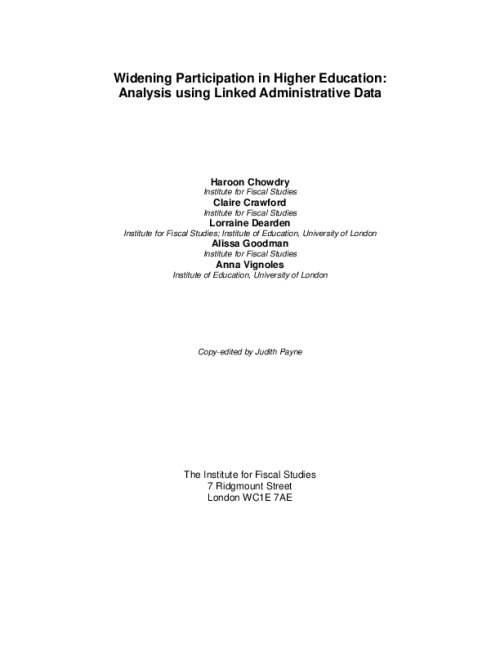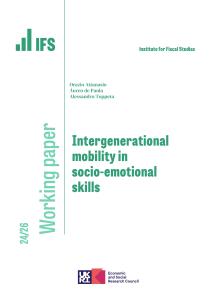Higher education (HE) participation has expanded dramatically in England over the last half century; however, access to HE amongst particular groups of students remains a major policy concern. This report makes use of newly linked administrative data to better understand the determinants of participation in HE - and participation in high status universities - amongst those facing socio-economic disadvantage, those from poorly educated families and ethnic minorities. It is unique in being able to follow a particular cohort of children (all state school children in England in Year 11 in 2001-02) from age 11 right through to HE participation at age 18 (in 2004-05) or age 19 (in 2005-06).
The findings documented in this report show that while there are large raw gaps in HE participation rates by socio-economic status, these differences disappear once controls for prior attainment are included. This suggests that it is not barriers arising at the point of entry into HE (e.g. borrowing constraints) that are most problematic, but poor attainment in secondary schools. Indeed, if results can be improved between age 11 and age 16, those from poorer backgrounds are at least as likely to go on to university as their more advantaged peers. By contrast, most ethnic minority groups are now significantly more likely to participate in HE than their White British counterparts.












